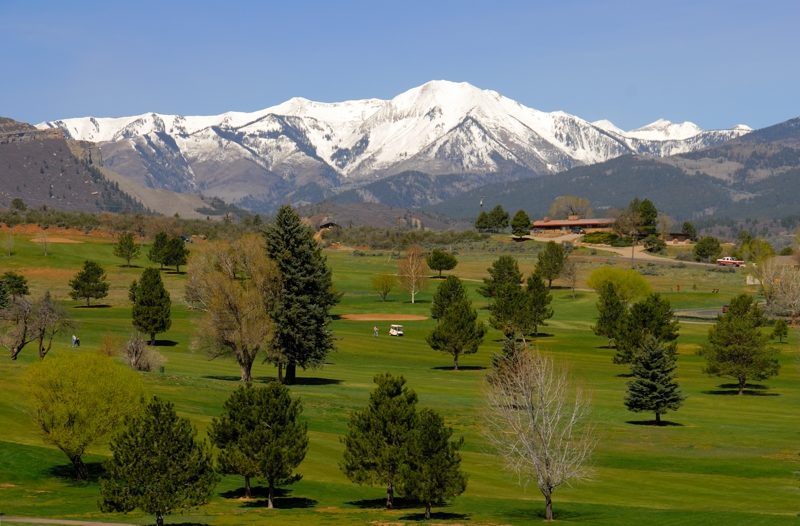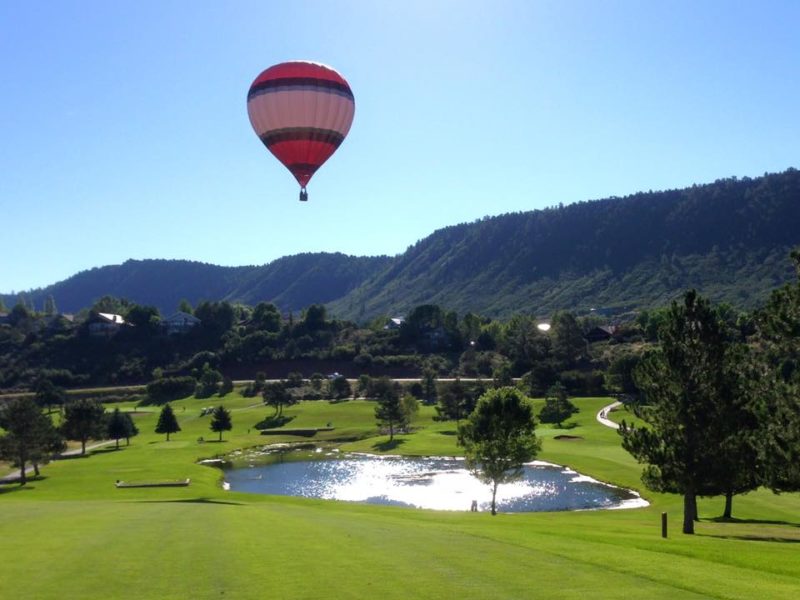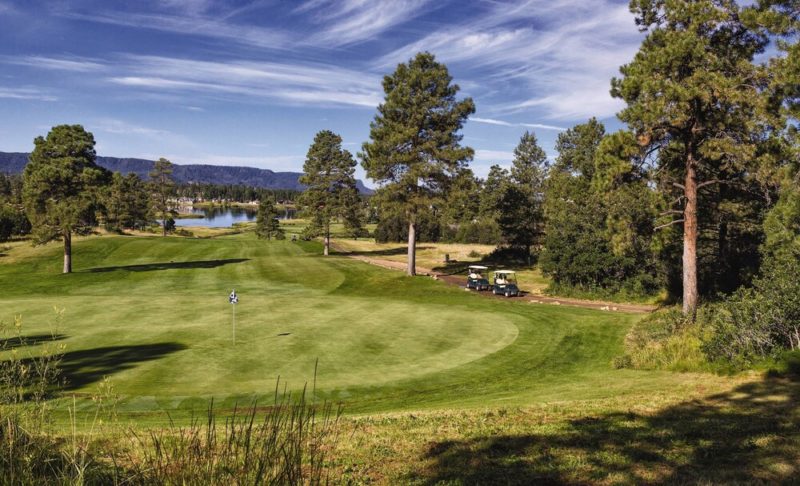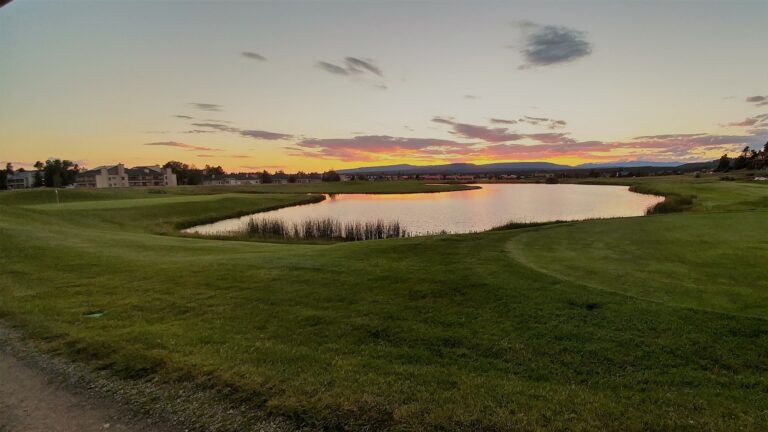SW Colorado municipal golf shines bright here along the Continental Divide
HILLCREST and PAGOSA SPRINGS, Colo. (Sept. 26, 2019) – There’s something about golf in Colorado that sends the spirit soaring as far and high as a well-struck drive in the mountainous state’s thin air. These environs attract second-home owners, retirees and tourists from hotter climates in droves.
Two towns in Colorado’s southwest corner – Durango and Pagosa Springs – have used that appeal to attract visitors, enticing them into returning each year or putting down permanent stakes.
Durango (population about 17,000) and Pagosa Springs (1,800) are connected via 60 miles of Highway 160 near the state’s Four Corners region and on the near-western slope of the Continental Divide. Both towns are on isolated mesas south of the San Juan Mountains, which dominates the area’s panoramas.
During a recent trip to the region, I teed it up at the two towns’ most accessible golf courses – Hillcrest Golf Club in Durango and Pagosa Springs Golf Club in Pagosa Springs. Both are surprisingly good and super-affordable, aspects of towns known for their low cost of living and quality of life.

Pride is Evident at Durango’s Hillcrest GC
The first impression of Hillcrest GC, located just minutes from Durango’s bustling downtown and situated at an elevation of 6,512 feet, is a little underwhelming as the course’s holes run pretty much side by side. The design by Frank Hummel sought to maximize the site’s small size.
But once into the round, Hummel’s work provides a different perspective. The wide fairways are seldom flat and there are some dramatic uphill and downhill shots, all into greens that are smallish and lightning-quick. Most of the putting surfaces are also raised and contain considerable contour and slope.
Opened as a nine-hole layout in 1969 and expanded to 18 in the mid-1980s, par-71 Hillcrest stretches 6,912 yards from the tips, where it has a rating of 71.2 and a Slope of 130.
The first six holes on the opening half play downhill and then rise back up, resulting in some fun shots off elevated tee boxes and some long uphill shots.
Hillcrest is characterized by some dandy par 4s, including the 482-yard 13th (which meanders downhill past a bunker at the left of the prime landing area and water all along the starboard side); the 477-yard fourth (with its wide, rolling fairway and a greens complex impinged by bunkers both sides at the front); and the 479-yard closing hole, a rollicking, big-shouldered hole that moves slightly downhill and right-to-left.
All four of Hillcrest’s par 3s are at least 197 yards, highlighted by the ninth, which ends at the toughest green on the course, and the 12th, which requires a carry over a pond.
Hummel also designed two drivable par 4s – the 325-yard sixth and 327-yard 10th – to balance out the layout, but neither is a pushover. There are only three par 5s here, with the best being the 17th, a true three-shot hole at 564 yards, with out-of-bounds and a hill along the right that weaves into play on the first two shots.

Hillcrest is a fun, parkland-style course kept in excellent condition. This is a friendly, no-frills operation with a staff that takes a lot of pride in its attention to detail.
The course doesn’t get the publicity afforded more lauded tracks nearby, but a trip to Durango would be incomplete without a round here.
Three Different Sides Appealing at Pagosa Springs GC
About an hour-and-a-half drive east of Durango is Pagosa Springs, a resort community where more than 60 percent of its residents live in town on a part-time basis.
Pagosa Springs is located about 35 miles north of the New Mexico border, nestled at 7,000 feet along the Continental Divide. High-desert plateaus and mountains north and east of the city result in an unusually mild climate, particularly in the summer. The immediate area boasts about 300 days of sun annually and four distinct seasons.

One of the town’s focal points – both for vacation properties and residential concerns – is Pagosa Springs Golf Club, a 27-hole facility that’s a joy to play. The Pinon and Ponderosa nines, designed by D.J. DeVictor, opened in 1980, while the Meadows nine, fashioned by Johnny Bulla, came on-line in 1985.
Pinon plays 3,419 yards from its back set of three tees and features a good mix of long and short holes along with topographical variations.
Three holes bring water into play, including the 126-yard par 3 eighth, which entails all carry over a large pond. The uphill, 415-yard second and 435-yard seventh – a sharp dogleg-left with a small creek crossing about 100 yards out and a large pond at the left – are two of the most challenging holes here.
Pinon’s best offering might be the 567-yard par 5 sixth, which is narrowed by trees in the landing area and prime lay-up location, and sports bunkers front and back.
The Ponderosa nine is the most scenic of the three as it plays up and down hills through some towering pines. It’s short at just 3,136 yards and a par of 35, but has one monster par 4 – the 442-yard fourth (a slight dogleg-right with a green guarded by three bunkers) – and a hearty three-shotter, the 567-yard ninth, which is narrowed by two tall ponderosas along the right.
The fairways on Ponderosa are the tightest of the three nines. There are lots of ups and downs and the fairways, lined with some beautiful mountain and vacation homes, are relatively flat with very few uneven lies.
The Meadows, set in a shallow valley below the other two courses, is much longer (at 3,734 yards) and more open than Pinon and Ponderosa. The layout involves a mix of small lakes and streams.
Again, it’s the two-shotters that are the toughest at Meadows. The 491-yard ninth is the longest par 4 at all of Pagosa Springs, but it’s not even the most difficult hole. That designation goes to the 449-yard par 4 fifth, which moves right to left from the tee with a lake off to the left and a green guarded by sand left and three large grassy mounds right.
The 212-yard sixth is the toughest par 3 on the property. Besides length, water engirds the green on three sides.
On the day we played Pagosa Springs, the place was bustling and in great condition, an indication of the fun to be had on the course and in the area.


